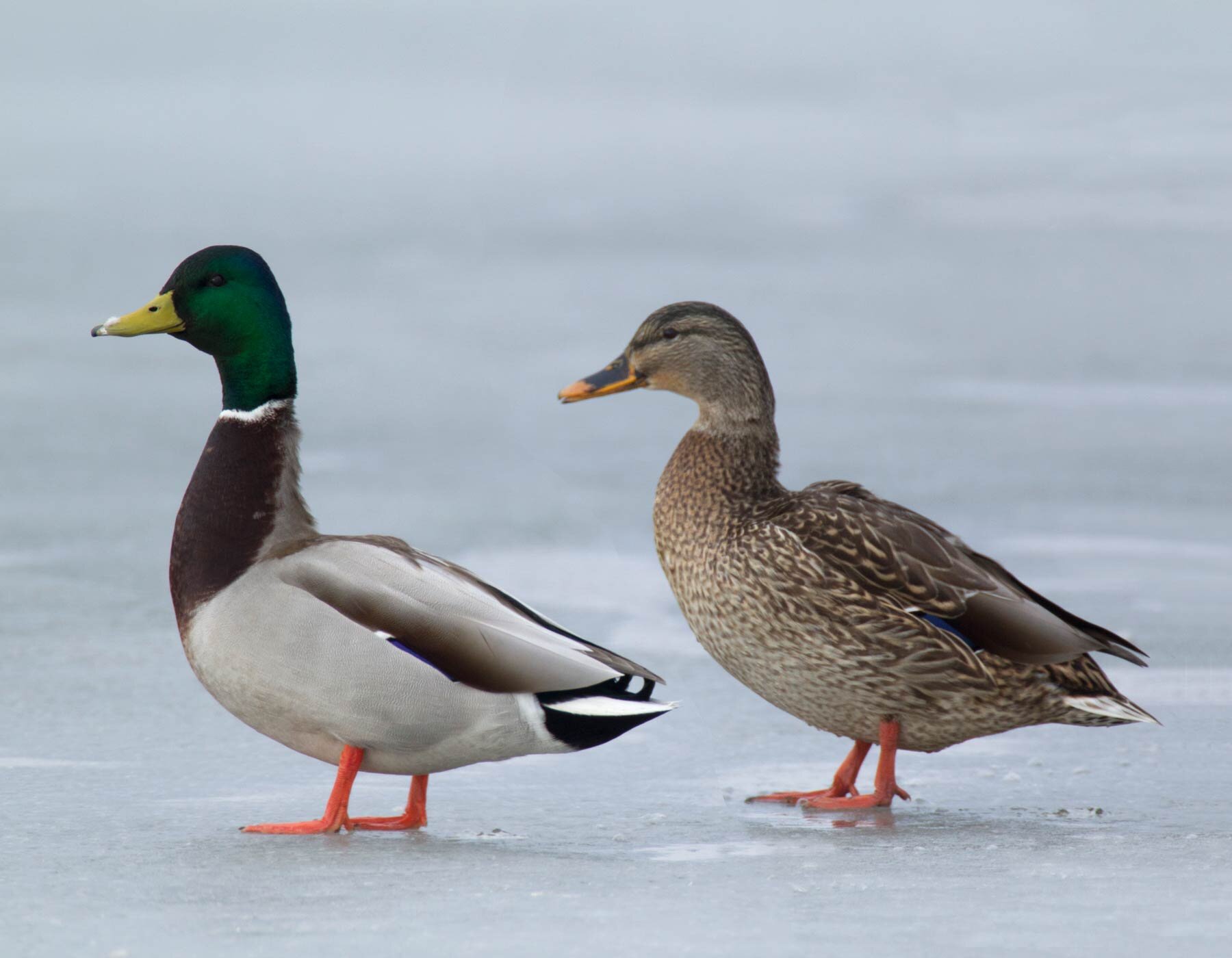Male and Female Mallard Duck. Photo by MDC Staff, courtesy Missouri Department of Conservation.
What ways can fish eggs be spread? You thought I was talking about different crackers to use with caviar didn’t you?
In your biology courses, you may have learned there are many different ways seeds, invertebrates, and even larvae of insects are able to disperse over large ranges and to unexpected locations, but can the same be said for fish eggs?
Up until recently the answer to that was no (with the exception of Killifishes), however a paper released in July 2020 by Adam Lovas-Kiss et al. learned something interesting when it comes to waterfowl.
Mallard ducks, a migratory waterfowl, already known for their ability to disperse both aquatic and terrestrial plants were chosen to use in the study and due to their similarity to most teleost fish, researchers chose to use 2 types of fertilized carp eggs- Common Carp and Prussian Carp.
The ducks were individually housed and were each force fed the fertilized eggs (Common Carp in the first experiment and Prussian Carp in the second). After the eggs were ingested, their feces were collected after 1,2,4,6,8,12, and 24 hours.
After the feces were soaked in river water and each sample sifted through this is what they collected:
.2% (8) of the Common Carp eggs
.25% (10) of the Prussian Carp eggs
All but 1 of which, were recovered from the feces within the first hour after ingestion, with the outlier egg being recovered between 4 and 6 hours after ingestion.
Of all the eggs that passed through the Mallards’ digestive systems, 2 Prussian Carp eggs hatched and 1 Common Carp egg hatched! The males passed more eggs than females (15 to 3) and only the eggs passed by the males hatched after they were recovered. It should be noted that all of the hatched fish, both those in the control group and those ingested by the ducks eventually died of fungal infections.
These findings open up and invite many future studies that could look at the traits of fish as well as other waterfowl and their ability to act as a means of dispersal for embryonic fish.
Experimental evidence of dispersal of invasive cyprinid eggs inside migratory waterfowl
Ádám Lovas-Kiss, Orsolya Vincze, Viktor Löki, Felícia Pallér-Kapusi, Béla Halasi-Kovács, Gyula Kovács, Andy J. Green, Balázs András Lukács
Proceedings of the National Academy of Sciences Jul 2020, 117 (27) 15397-15399; DOI: 10.1073/pnas.2004805117

